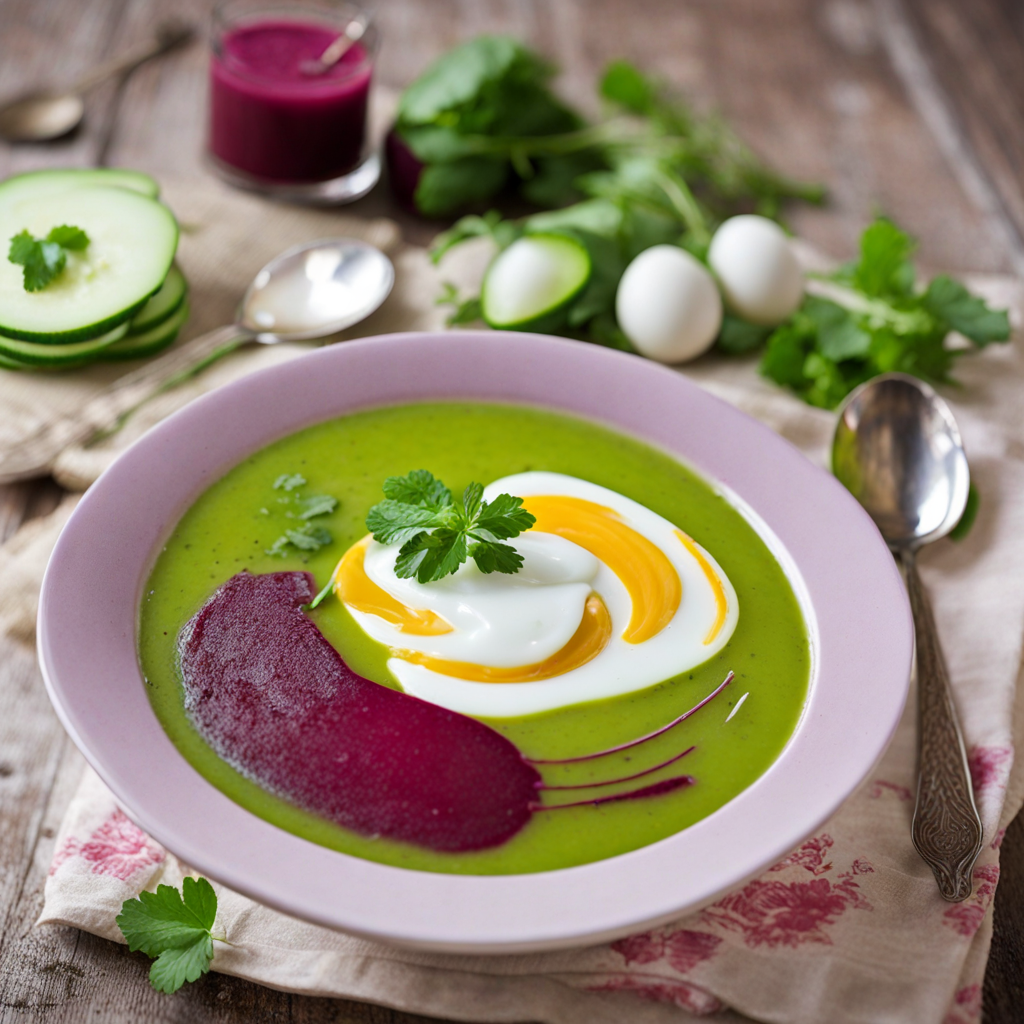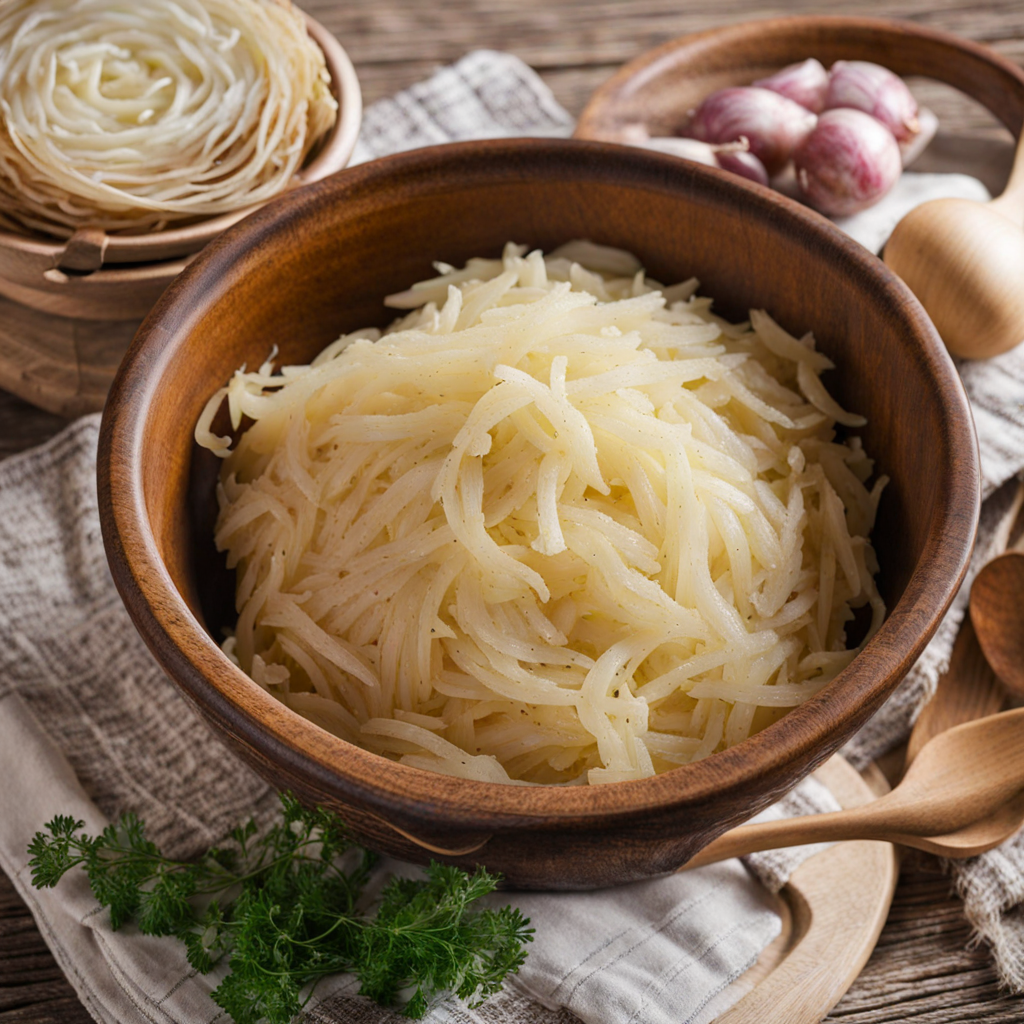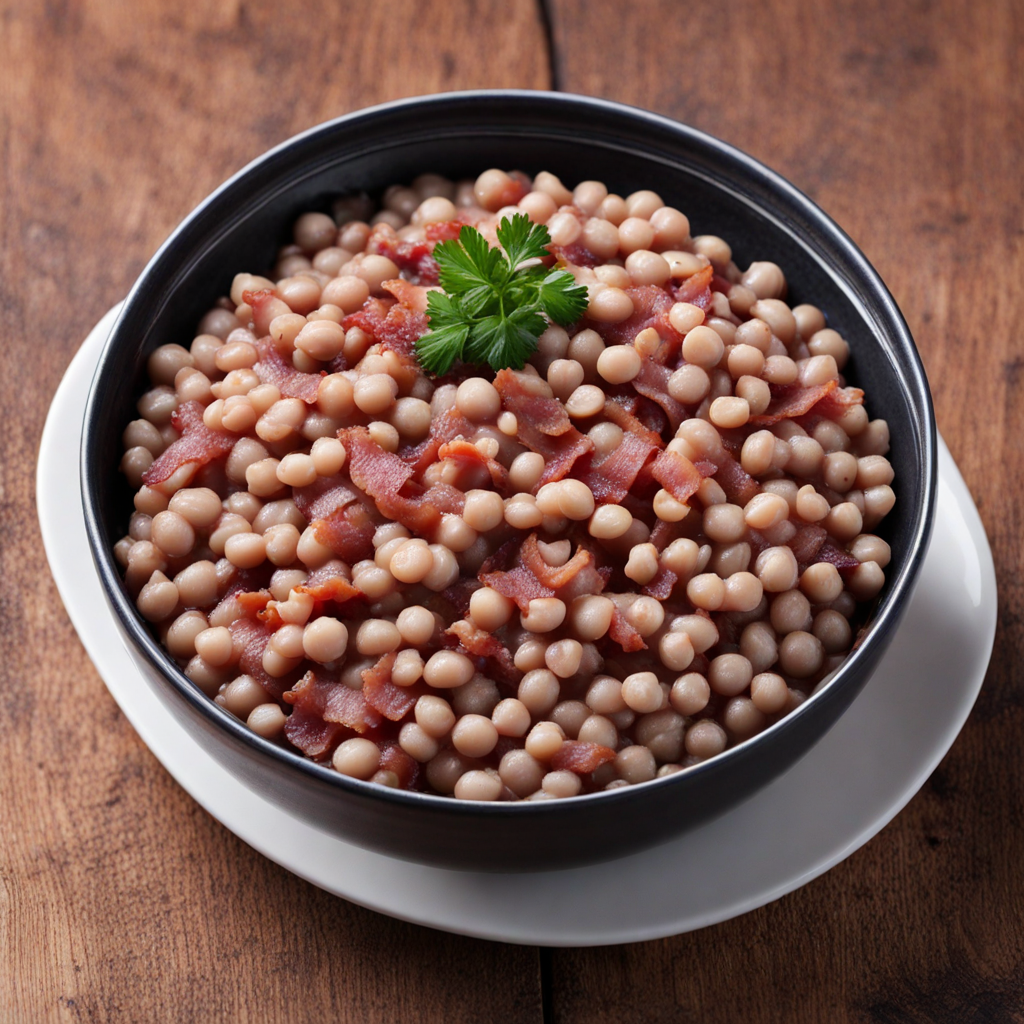Cold Beet Soup
Cold Beet Soup, known as "Aukstā biešu zupa" in Latvian, is a vibrant and refreshing dish that perfectly encapsulates the essence of summer in Latvia. This chilled soup is primarily made from beets, which give it a striking ruby-red color that is as appealing to the eyes as it is to the palate. The earthy sweetness of the beets is beautifully balanced with a hint of tanginess, often derived from the addition of buttermilk or yogurt, creating a creamy texture that enhances the soup's overall richness. Fresh dill and chives are typically sprinkled on top, adding a pop of green and a burst of herbal flavor that complements the soup's core ingredients. The preparation of Cold Beet Soup is simple yet allows for creativity. Beyond the beets, it often incorporates other fresh vegetables such as cucumbers and radishes, which add crispness and crunch. Some recipes include boiled eggs, either chopped or sliced, which lend a richness and protein boost to the dish. The soup is usually served cold, making it a perfect choice for warm weather or as a light appetizer. Each spoonful delivers a complex taste experience, where the sweetness of beets mingles with the creaminess of dairy and the freshness of herbs. Cold Beet Soup is not just a visual delight but also a celebration of seasonal ingredients, typically enjoyed during the summer months when beets are at their peak. It embodies the spirit of Latvian cuisine, which emphasizes wholesome, locally-sourced ingredients prepared in a way that highlights their natural flavors. This dish is not only nourishing but also a conversation starter, inviting those who try it to explore the rich culinary traditions of Latvia and discover the joy of cold soups.
How It Became This Dish
Origin of Aukstā biešu zupa Aukstā biešu zupa, or cold beet soup, is a beloved traditional dish from Latvia that embodies the country's agricultural heritage and culinary ingenuity. The origins of this vibrant pink soup can be traced back to the rural communities of Latvia, where beets were a staple crop, thriving in the country's temperate climate. Beets have long been appreciated not just for their nutritional value, but also for their versatility in various dishes. Historically, soup was a fundamental part of Latvian cuisine, especially during the summer months when lighter, refreshing meals were preferred. As the temperature rose, people sought out ways to cool down, and the idea of serving soup cold became increasingly popular. By the 19th century, Aukstā biešu zupa began to emerge as a distinct dish, evolving from earlier beet-based soups that were typically served hot. The shift to a cold soup was not only practical but also a reflection of the cultural practices surrounding seasonal eating. \n\n Cultural Significance Aukstā biešu zupa holds significant cultural importance in Latvia, often served during festive occasions, family gatherings, and traditional celebrations. It is particularly popular in the summer, symbolizing the abundance of locally sourced ingredients. The soup is not only appreciated for its refreshing taste but also for its vibrant color, which represents vitality and health. In Latvian culture, food is deeply intertwined with community and tradition. Aukstā biešu zupa often appears on the tables of households during midsummer celebrations (Jāņi) and other local festivals, where it is enjoyed alongside various bread, dairy products, and fish dishes. The soup's bright hue makes it a festive addition to any meal, enhancing the visual appeal of the dining experience. Furthermore, it is often prepared in large batches, allowing families and friends to gather around the table to enjoy the meal together, reinforcing social bonds. \n\n Ingredients and Preparation The fundamental ingredients of Aukstā biešu zupa include beets, sour cream, and a variety of vegetables, typically including cucumbers, green onions, and dill. Each family may have their own unique recipe, with some adding hard-boiled eggs or even fish for extra flavor. The preparation of the soup is relatively simple: beets are boiled, peeled, and grated, then mixed with buttermilk or kefir, and combined with chopped vegetables. This mixture is chilled before serving, often garnished with fresh herbs and egg slices. The use of sour cream or kefir in the recipe reflects the influence of dairy farming in Latvia, highlighting the country’s agricultural practices. The combination of beets and dairy creates a harmonious balance of flavors that is both tangy and earthy. As the dish developed over time, variations emerged, with some recipes incorporating a splash of vinegar or lemon juice to enhance acidity, or even using cooked potatoes to enrich the texture. \n\n Regional Variations As with many traditional dishes, Aukstā biešu zupa has regional variations that reflect local tastes and available ingredients. In some areas, it might be spiced up with horseradish or flavored with garlic, while in others, it may lean more heavily on the incorporation of fresh herbs. Latvians living abroad, particularly in countries with large Latvian communities, have also adapted the recipe to include ingredients that are more accessible, often leading to creative interpretations of the classic dish. The soup is recognized not just in Latvia, but also among neighboring Baltic states, each with their own take on the basic recipe. In Estonia, for example, a similar dish called "külmsupp" is enjoyed, showcasing the shared culinary heritage of the region. While each country has its nuances, the essence of cold beet soup remains a beloved staple, celebrating the bounty of summer and the rich agricultural traditions of the Baltic. \n\n Nutritional Value Aukstā biešu zupa is not only a feast for the eyes but also a nutritious choice, rich in vitamins and minerals. Beets, the main ingredient, are known for their high content of fiber, potassium, and antioxidants, particularly betalains, which have been associated with various health benefits, including improved heart health and reduced inflammation. The addition of fresh vegetables increases the soup's nutritional value, making it a wholesome dish that aligns with modern dietary preferences for healthy, plant-based meals. The incorporation of dairy products like sour cream or kefir adds probiotics, which are beneficial for gut health, further enhancing the soup's profile as a nourishing dish. In a time when health-conscious eating is on the rise, Aukstā biešu zupa stands out as a delicious option that satisfies both the palate and the body. \n\n Modern Popularity and Global Recognition In recent years, Aukstā biešu zupa has gained popularity beyond the borders of Latvia, with food enthusiasts and chefs worldwide discovering its unique flavor and vibrant appearance. It has been featured in various international culinary festivals and food blogs, showcasing the beauty of Latvian cuisine to a broader audience. As global interest in traditional and artisanal foods grows, Aukstā biešu zupa serves as a perfect example of how regional dishes can transcend cultural boundaries. Restaurants in Latvia and abroad have begun to innovate with the dish, offering contemporary twists on the classic recipe that maintain its essence while appealing to modern tastes. For example, some chefs experiment with plating techniques or incorporate gourmet ingredients, such as pickled vegetables or infused oils, to elevate the dish. This kind of creative expression not only honors traditional recipes but also paves the way for new interpretations that resonate with younger generations. \n\n Conclusion Aukstā biešu zupa is more than just a cold soup; it is a culinary symbol of Latvia's cultural heritage, agricultural practices, and communal spirit. Its origins in rural kitchens, coupled with its evolution over time, reflect the adaptability and creativity of Latvian cuisine. As it continues to be celebrated both locally and internationally, Aukstā biešu zupa remains a cherished dish that embodies the flavors and traditions of Latvia, inviting everyone to experience its refreshing taste and rich history.
You may like
Discover local flavors from Latvia







